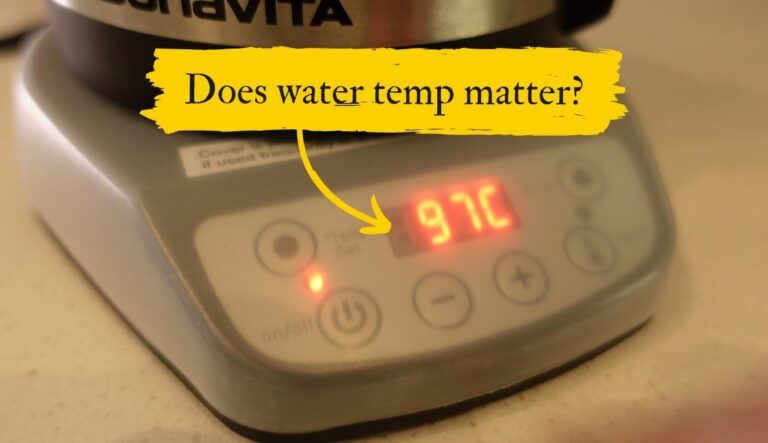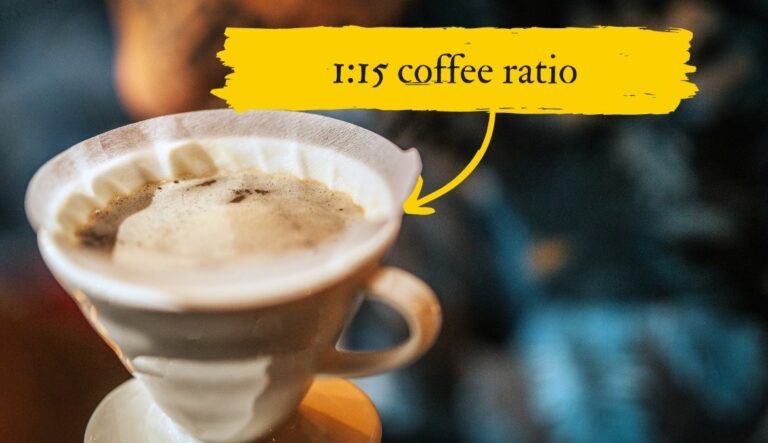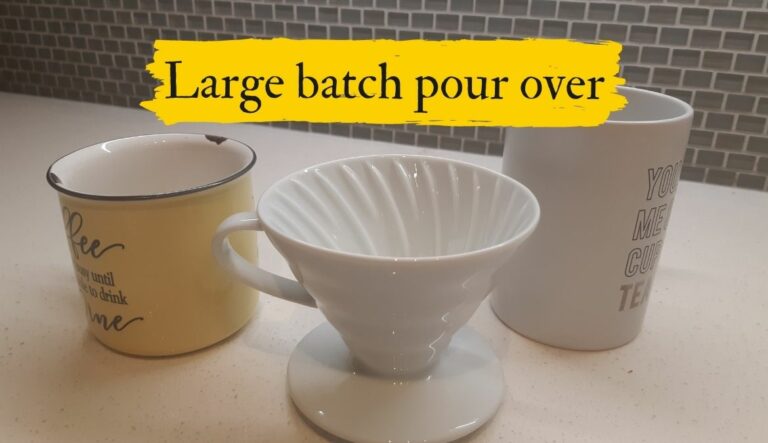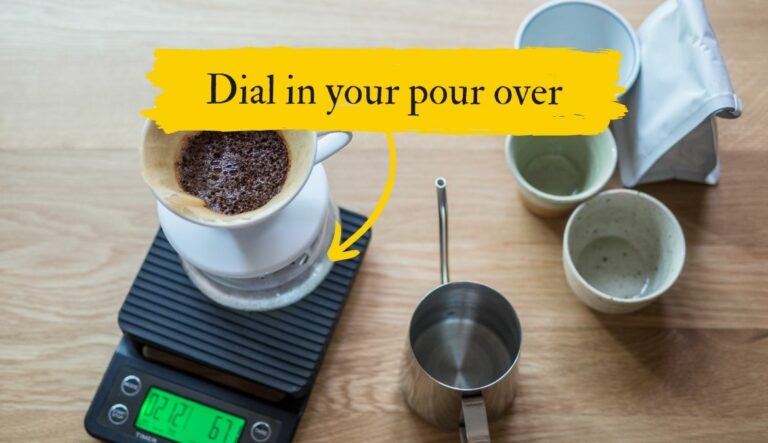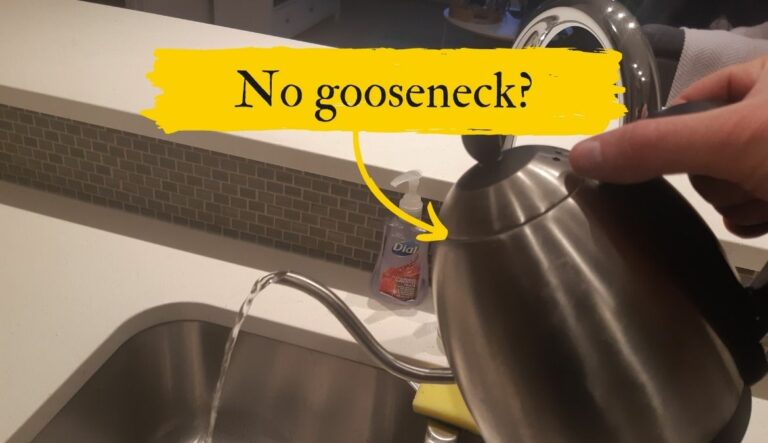Pour over coffee usually tastes weak because not enough soluble coffee bean material has been dissolved into the beverage. This is referred to as under extraction. But pour over coffee might also taste weak because you’re using a light roast or sourcing the wrong type of beans.
This article dives into every factor that’s affecting the strength of your pour over coffee. By the end, you will be able to brew a wonderful tasting and strong cup of coffee.
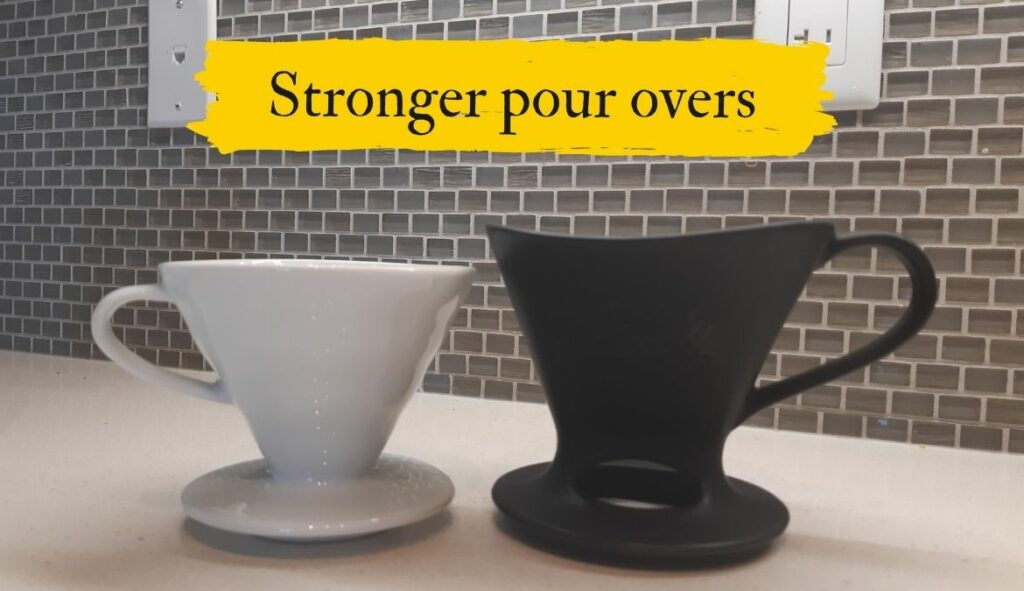
What does a strong pour over even mean?
The strength of a pour over coffee may refer to the caffeine content, the aroma or the flavor. Most people are talking about the flavor when they are discussing coffee strength. This can be affected by bean type, roast level and how you prepare the coffee during the brew process.
For the purpose of this article, we will be focusing on increasing the flavor of pour over coffee by improving your brew method and bean selection.
How to brew a stronger pour over coffee
Brew a stronger tasting pour over coffee by using a finer grind size, increasing your brew temperature, brewing with softer water or trying a different pour over cone. You can enhance specific flavors by sourcing coffee from different countries, using a different roast level, or by trying new processing methods.
The first set of factors listed above affect the extraction yield of your coffee beans. In other words, the percentage of soluble coffee bean material that gets dissolved into the beverage. An 18-22% extraction yield is considered optimal for pour over coffee.
The second set of factors are concerned with the different flavor preferences you may have and how you can change the strength of these preferred flavors based on what type of coffee you buy.
Here is how each of these factors affects the strength of your pour over coffee:
Use a smaller grind size
More finely ground coffee has a larger surface area and will extract more quickly into hot water. This means your coffee will contain a higher concentration of dissolved coffee bean material, which increases its strength.
However, over extracting will cause coffee’s most bitter and unpleasant flavors to dissolve, which will make your coffee taste bad. This is why you want to stay between the 18-22% extraction yield.
Increase your coffee ratio
You can increase the amount of dissolved coffee in your cup by increasing the percentage of beans you use per water. We recommend a 1:15 coffee-to-water ratio for pour overs, but many people suggest up to a 1:17 ratio as well.
Do some experimentation to see what ratio works best for your particular coffee and taste preferences.
Increase your brew temperature
199-205°F (93-96°C) is the optimal brew temperature for pour rover coffee. The hotter the water, the more quickly extraction will occur. So you can increase the strength of your pour over coffee by brewing with hotter water.

We recommend buying a gooseneck kettle with a built-in temperature gauge. This allows you to brew coffee to a specific temperature based on your prefered pour over recipe.
Get a consistent grind with with a burr grinder
A uniform grind size will extract more evenly and will allow you to dial in your pour over brew process. This is because the surface area of each granule is the same and will be extracted at the same rate. Otherwise, some grains will over extract and taste bitter while others will under extract and taste sour.
A uniform grind size is crucial in brewing consistently great tasting pour over coffee. This is achieved with a burr grinder.
A consistent grind size will not increase the strength of your pour over by itself. But it’s a crucial factor for you to control so that you can understand what is causing your pour over to taste weak in the first place.
Make sure you are doing a bloom
The bloom component of preparing pour over coffee is important because it affects the perceived strength and taste of the coffee. Without doing a bloom, carbon dioxide gets trapped and imparts an unpleasant taste on the coffee that masks other pleasant flavors, which may make it taste weaker than it actually is.
The best way to bloom is to use a gooseneck kettle and pour twice as much water as your coffee and let it sit for 40 seconds. For example, if you have 22g of coffee, pour 44g (44ml) of water to bloom.
Try a darker roast level
Dark roasted coffee has stronger roasted, nutty and chocolatey flavors. It also tends to have a more potent aroma as well. These smells and flavors are what most coffee drinkers associate with strong coffee, so using a darker roast is a great way of achieving this result if that’s what you’re after.
Try a different bean origin
Coffees have different flavors depending on where they are grown. So sourcing coffee from specific countries may increase the strength of specific flavors that you enjoy most.
Ethiopia is generally known for more fruity and floral flavors. Especially strawberries, blueberries and other berries and red fruit.
Rwanda is often associated with floral aromas but tastes of melon, stone fruit and citrus fruits. Costa Rica is generally known for tropical fruit and brown sugar flavors. El Salvador is generally known for plum and red fruits. Colombia is known more for chocolate and nutty flavors.
These are broad characterizations and does not mean that all coffee from Colombia tastes nutty. The point is that each country has a different climate and tends to produce very different coffee.
Try a different processing method
Washed coffee will often have some fresh fruit flavors, but will often take on more characteristics from the roasting process, such as chocolate, nutty, and earthy.
Natural coffees, which are dried inside the coffee cherry, will taste very fruity, tropical, floral and sometimes even a little fermented. They provide a very different coffee experience that certainly has some strong flavors that you simply won’t find in washed coffee.
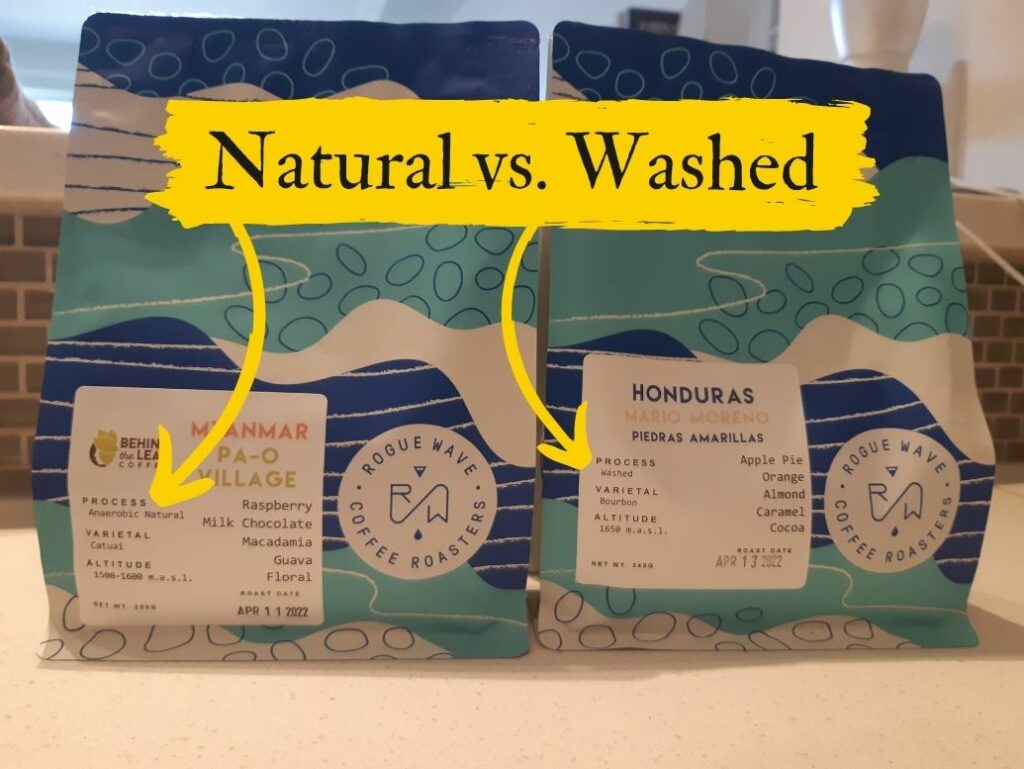
Honey coffees fall somewhere in between as they are processed ouside of the coffee cherry but still inside the mucilage.
Within each of these three main processing methods are countless other nuances and variations that will change a coffees flavor profile and strength. Experiment with some new ones!
Use softer water
Softer water tends to maximize the rate at which coffee will extract. This means your water will be able to dissolve more coffee compounds and produce a stronger tasting beverage. 100-300ppm TDS is considered an optimal water hardness for pour over coffee.
Perfectly neutral water with 0ppm TDS will not extract as effectively as water that contains some general hardness in the form of magnesium. But water with too much carbonate hardness is known to negatively affect extraction as well.
Therefore, the 100-300ppm range provides pour over enthusiasts with a good balance between the two.
Consider a different pour over cone
The design of each pour over funnel causes coffee to brew and extract differently. The Hario V60 has a wide opening, which provides little resistance for water to pass. Therefore, all things being equal, it would have a shorter brew duration than a Melitta cone that has a much more narrow opening.

Why is my pour over coffee so light?
A light colored pour over coffee is the result of under extraction. It means there is a low concentration of dissolved coffee beans in the beverage. A light pour over is also likely to taste weak or possibly sour because it hasn’t achieved an optimal extraction yield.
How do I get more flavor from pour over coffee?
If a pour over coffee tastes weak, you can get more flavor by increasing the extraction yield from the beans. But if your pour over simply has boring tasting flavors then you can consider trying naturally processed beans which have a more fruity and floral flavor profile.

